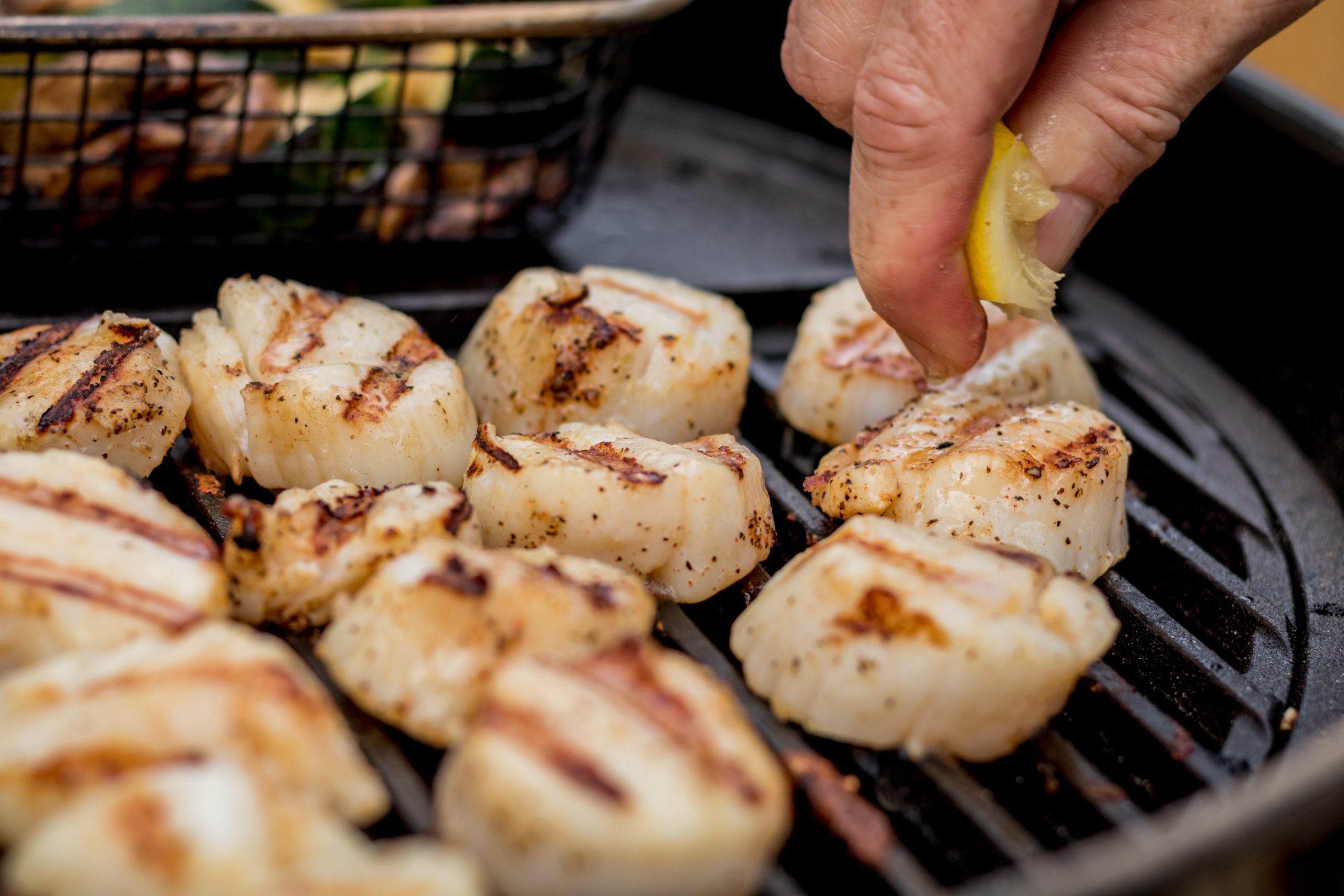Scallops: Tom Parker Bowles on the sublime seafood that 'is both achingly tender and blissfully sweet'
A symbol of both pagan fertility and Christian piety, the sensual and sublime scallop is both achingly tender and blissfully sweet, says Tom Parker Bowles.


There's rather more to the scallop than initially meets the eye. Up to 200 of them, for a start—eyes, that is, green ringed with blue and scattered around their frill. Not so much for looking forward, these eyes face backwards so as to watch out for any peckish predators.
The king scallop is also a creature of contrasts, managing to be a symbol of both pagan fertility and Christian piety, the sensual and the sublime—as seen in Botticelli’s The Birth of Venus, where the ethereal beauty of the goddess, windswept and winsome on her scallop shell, combines both mythical birth and Christian baptism.
It’s a hermaphrodite, too, the orange coral (or roe) sitting next to the creamy coloured testis (or sperm). In America, they tend to throw away this delectable bite, but, over in Europe, it’s rightly adored, every bit the equal of that exquisite alabaster puck. The pale part is actually a mighty muscle, opening and closing the shell, allowing the scallop to scoot across the seabed with surprising speed.
However, for all that power, the flesh remains achingly tender and blissfully sweet, to the point where anything but the briefest exposure to heat seems tantamount to abuse.
When it comes to the fishing of these beasts, I used to believe that hand dived was the only option. A diver goes down, carefully picks exactly what is needed, then surfaces, his net bag bulging with shells, the seabed left unsullied.
Trawling, on the other hand, can be environmentally ruinous, as heavy-toothed dredges with teeth up to 4in long rip through the seafloor with little care for the consequences, damaging reefs and killing crabs, sand eels and all manner of other species.
Yet, things are rarely that clear cut. ‘A hand-dived scallop is a great product, no doubt about that,’ enthuses Mitch Tonks, sustainable seafood guru and the man behind The Seahorse and Rockfish restaurants. ‘But, if we relied only on dived scallops, we’d have to stop eating them. There simply wouldn’t be enough to satisfy demand.’
Sign up for the Country Life Newsletter
Exquisite houses, the beauty of Nature, and how to get the most from your life, straight to your inbox.
A few years back, Mr Tonks made a television programme in Loch Fyne and one of the scallop divers, who used to dredge, told him that he and his five-strong team had done more damage to stocks than the trawler.
The reason being that diving is efficient and selective — you can harvest the big ones (‘the brood stock, more valuable’) and get to places where boats cannot. It can be tempting to grab everything. ‘What isn’t acceptable is trawling very close inshore,’ he agrees.
The Marine Stewardship Council (MSC) awards its ‘best choice’ to the farmed and diver-caught scallops, but lists four ‘OK’ certified dredge fisheries. If in doubt, look for the MSC sticker or ask your fishmonger.
When it comes to the eating, I love them thinly sliced, with soy and wasabi, as sashimi. Or gently ‘cooked’ by citrus juice in Peruvian ceviche and Mexican aguachile (as in the recipe, below).
If you are going to cook them, make sure the pan is searing hot (ensuring the scallops are dry), then gently oil and season them. They need no more than a couple of minutes each side. The centre should remain translucent and just warm.
Queenies (smaller and a different species to the king), should always be eaten raw, preferably by the dozen with a sharp citrus dressing, as they serve them at The Wolseley.
Scallops also adore pigs (don’t we all). Crisp bacon, fiery nduja and frazzled chorizo make splendid partners. Those of a rather more retro bent (and that’s very much me) will be drawn to coquilles St Jacques—that great Gallic gratin—preferably served in the shell with daintily piped mashed potato.
This recipe comes from Edson Diaz-Fuentes’s Ciudad de México. He also runs, with his wife, Natalie, Santo Remedio, two London-based branches of the best Mexican restaurant in the country. Aguachile means ‘chilli water’ and is similar to a ceviche, although the raw seafood only has a few moments in the marinade. Use the very freshest scallops you can find, preferably opened in front of you.
Ingredients
Makes six
- 6 corn tortillas (I get mine from www.coolchile.co.uk)
- 1–2 tspn oil
- 6–8 very fresh scallops
- 6 tbspn mayonnaise
- 1 avocado, peeled, stoned and finely sliced
- Half a red onion, finely sliced and pickled in equal amounts of cider vinegar and lime juice, with a big pinch of salt, for at least two hours
- Coriander leaves
For the aguachile marinade
- 80g serrano or jalapeño chillies
- 20g cucumber, roughly chopped
- 10g ginger, peeled and finely chopped
- 1 garlic clove, peeled
- 50ml orange juice
- 50ml lemon juice
- 1tspn sugar
- 1tspn salt
- 1tspn rice vinegar
- 1tspn fish sauce
Method
Place all marinade ingredients in a blender and mix until completely smooth. Strain through a sieve and set aside.
Preheat the oven to 170˚C/325˚F/gas mark 3. Lightly coat the tortillas with the oil and bake, on a metal rack over a baking tray, for 20–30 minutes, turning halfway through.
Slice the scallops into very thin coins.
Place the tostadas on serving plates and thinly spread 1tbspn of mayonnaise on each. Place a few slices of avocado on top of each one. Dip the scallop coins into the marinade and arrange on top of the mayonnaise, one sliced scallop per tostada, fanning them out.
Tom Parker Bowles is food writer, critic and regular contributor to Country Life.
-
 'Monolithic, multi-layered and quite, quite magnificent. This was love at first bite': Tom Parker Bowles on his lifelong love affair with lasagne
'Monolithic, multi-layered and quite, quite magnificent. This was love at first bite': Tom Parker Bowles on his lifelong love affair with lasagneAn upwardly mobile spaghetti Bolognese, lasagne al forno, with oozing béchamel and layered meaty magnificence, is a bona fide comfort classic, declares Tom Parker Bowles.
By Tom Parker Bowles
-
 Country houses, cream teas and Baywatch: Country Life Quiz of the Day, April 24, 2025
Country houses, cream teas and Baywatch: Country Life Quiz of the Day, April 24, 2025Thursday's Quiz of the Day asks exactly how popular Baywatch became.
By Toby Keel